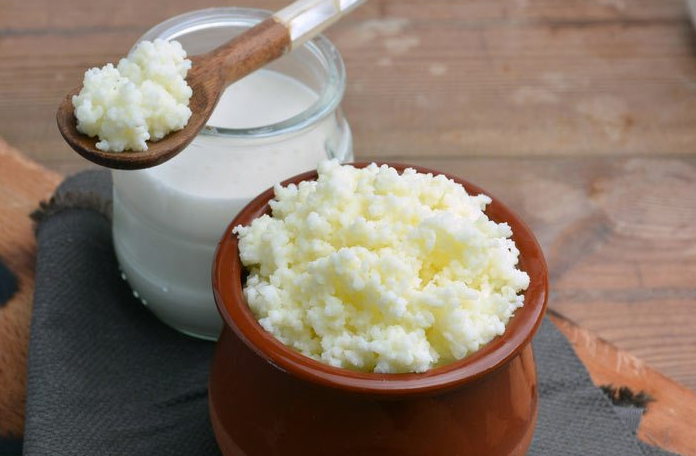Similar to yogurt in flavor, though stronger, kefir is a traditional cultured dairy product from the Caucasus, a mountainous region at the southwestern gateway where the European continent meets Asia. For generations, the people of the Caucasus have cherished the sour and faintly bitter drink as an elixir of long life. Milk kefir, like all fermented foods, is extraordinarily rich in B vitamins, beneficial bacteria, food enzymes, and antioxidants. It also contains kefiran, a component unique to milk kefir that is responsible not only for the smooth mouthfeel of kefir, but also for many of its medicinal qualities.
Unlike other cultured dairy foods such as yogurt or cheese, kefir requires a symbiotic colony of bacteria and yeasts (SCOBY), also referred to as kefir grains, to culture properly. Despite their name, kefir grains are
not grains at all, but rather a collection of beneficial bacteria and yeasts held together in a matrix of proteins, carbohydrates, and fats. Gelatinous in texture, they look like rumpled, overly large curds of cottage cheese. If you culture kefir regularly, your grains will proliferate and reproduce. Always keep the ratio of kefir grains to milk the same and give any excess grains away to a friend in need. Liquid and viscous, kefir is excellent on its own as a beverage, or it can be added to smoothies in place of yogurt. I often use it in place of buttermilk when cooking. A bit of honey tempers its acidity.
MAKES ABOUT 1 QUART
INGREDIENTS
- 1 heaping tablespoon milk kefir grains
- 4 cups milk
INSTRUCTIONS
- Put the kefir grains into a quart-size jar.
- Pour in the milk and cover tightly with a lid.
- Allow the milk to culture at room temperature for 24 to 48 hours, shaking or agitating the jar once or twice a day.
- The longer the milk ferments, the thicker and more sour it will become.
- After the kefir sours enough for your liking, strain it through a fine-mesh sieve and pour it into bottles or jars.
- Cover and place the kefir in the refrigerator, where it should keep for the better part of a month.
- Give the kefir grains in the sieve a quick rinse under running water, place them in a small glass container, cover them with water, and store them in the refrigerator.
- Milk kefir grains grow and proliferate when cultured regularly. Making milk kefir at least once a week will keep your grains vibrant and healthy.





